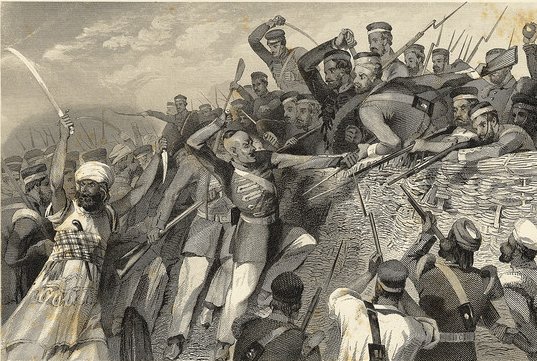During my time looking at the
conquest and independence at many different countries, I was able to see
several commonalities between them. It seems as if all conquerors use the same
techniques when it comes to colonizing an area, and that all of the conquered
people have a true desire to be free. The blogs I have viewed artfully
illustrate how the incoming people use their advanced technology and civilized
ways to take advantage of these less cultured indigenous inhabitants. They also
display how the fight for freedom was usually fronted by one specific person or
organization, and how this leader of the cause rallied the people of the
country, and truly led them to freedom.
Conquest of countries was
surprisingly similar after I viewed several different blogs. The startling
thing I found was that all of the conquerors took advantage of the less worldly
aboriginal populace by exploiting the naiveté of the people, and using their
advanced technology against the less progressive martial forces. The conquest
of Mexico, Argentina, and Jamaica are three prime examples of how superior
military forces easily took power from the native people. For example, Mexico
was originally inhabited only by ancient, tribal civilizations like the Aztecs.
While the Aztecs were quite innovative for a clannish society, they were no
match for the group of Spaniards led by Hernan Cortez. Cortez used the lack of
knowledge of the people to his advantage. He captured the leader of the Aztecs,
murdered him, and claimed Mexico as Spain’s. Argentina’s story is quite similar
due to the fact that it was also conquered and colonized by the Spanish. After
the Spanish built settlements in Argentina, they swiftly took control of
native’s land. One thing I saw was how they inadvertently used diseases to
their advantage in taking over Argentina. This weakened the conquered people
and allowed the colonization process to go much too smoothly. Spain was also
able to conquer Jamaica in a similar fashion. The conquering of Jamaica was
significant because it really displayed how the Europeans stabbed the poor
natives in the back. The Arawaks, or tribal natives of Jamaica were a kind
hearted and pacific people. The Spanish used this for their own personal gain
by using disease and superior weaponry to overtake the Arawaks, and made them
into slaves. Invasion of these countries was defined by the tactics and
technology of the conquistadors.
A common aspect of the decolonization
and liberation of the countries presented in the blogs is key leadership from a
single person or group. This leader of the independence movement would call for
freedom, and the people of the country would respond accordingly. Egypt, Pakistan, and Rwanda are three examples that show the emergence of leader as a
main reason they gained freedom. In Egypt, it was the Revolutionary Command
Council, created in 1952. Over the next four years, the RCC was able to gain
freedom for their country by ridding Egypt of all British troops. Pakistan’s
story will forever be intertwined with that of India. Gandhi was the first man
to step up and lead the Indian Independence movement, and he was followed by
two men who struggled for a Muslim country separate from India. These two
revolutionary men were Muhammad Ali Jinnah and his right hand man, Liaquat Ali
Khan. These two men headed the movement for a Muslim India, and because of
their efforts, Pakistan was formed. The Rwandan Patriotic Force, or RPF, was a
Tutsi group that fought for egalitarianism in Rwanda as the Hutu was sadly
oppressing their fellow Rwandans. The RPF were able to make Rwanda much more
equal, and with Rwanda now under the leadership of the RPF, they are rising
from the ashes like a Phoenix.
All conquest and liberation of
countries are similar in the fact that they begin with a more powerful nation
taking over, and end with a new, revitalized country surging to power. I find
this interesting because all countries have different ideas and each nation is
individual in its own way. But the desire to be free and ridden of the shackles
of oppression rises above people’s trivial differences and variances. Freedom
is something all people hope for, and it is something that each and every
person deserves.

